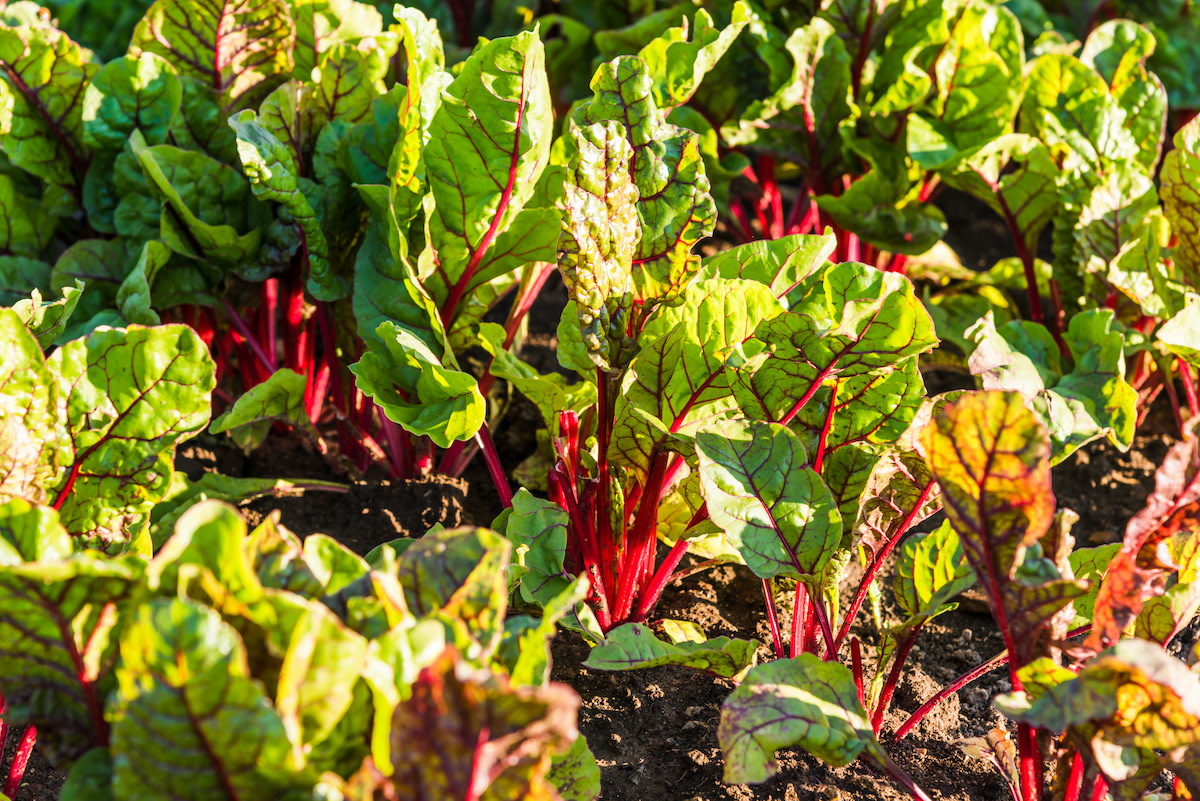How to Grow Swiss Chard: 5 Grow Tips for Swiss Chard
Written by MasterClass
Last updated: Jun 7, 2021 • 4 min read
With its bright and colorful stems, Swiss chard is one of the most eye-catching greens in the farmers' market. It can be prepared many ways—the leaves can be cut into ribbons and dressed raw in a salad, sautéed along with its stems, or braised in a stew. Swiss chard makes a great addition to any garden and is easy for gardeners to grow.
Learn From the Best
What Is Swiss Chard?
Swiss chard is a leafy green vegetable that is part of the beet family. It's leaves resemble that of its beet cousins, but the most recognizable feature of the chard is the color of its stalks: The white stalks of Swiss chard contrast with its dark green leaves, while Rainbow chard comes in colors ranging from deep red to bright yellow and orange.
Swiss chard plants are nutritious vegetables high in vitamins A and C and magnesium and potassium. While chard is a relative of the beet family, it is commonly associated with other leafy vegetables such as kale, lettuce, or spinach.
Common Types of Swiss Chard
The most common Swiss chard varieties to plant are Lucullus, Bright Lights, Bright Yellows, Rhubarb Reds, and Fordhook Giants.
When to Plant Swiss Chard
Swiss chard is a cool-season crop that can tolerate both warm and cool temperatures. However, planting too early in the spring can impede its growth. Swiss chard’s versatility allows for seeds to be sown and harvested in two growing seasons:
- Early spring. You can plant Swiss chard in the spring, after the last threat of frost. If you choose to plant earlier, use row covers to protect the seedlings overnight until the temperature rises.
- Fall. If you choose to grow for an autumn harvest, plant the Swiss chard seeds about a month and a half to two months before the first frost.
How to Plant Swiss Chard
After the last threat of frost passes in your region, you can plant Swiss chard in your garden.
- Choose a site. Chard plants require full sun with light or partial shade to grow well. Choose a planting area that gets around six hours of sunlight per day.
- Prepare the soil. Swiss chard plants prefer well-draining loamy soil with an average to slightly acidic soil pH level between 6.0 to 7.0. If you don’t know whether your soil is acidic or alkaline, you can perform a soil test using one of the methods featured in our soil test guide.
- Plant. If you're planting Swiss chard into an outdoor garden bed, sow the seeds at least two to three inches apart, in holes approximately one inch deep. Leave at least two to three feet between rows to give the plants room to grow.
- Transplant. Some gardeners prefer to begin the germination process indoors to control the humidity and temperature of its surroundings. If you are transplanting the Swiss chard, ensure that you leave the root ball undisturbed. Space your seedlings about four to six inches apart to give them ample room to grow.
How to Grow and Care for Swiss Chard
The journey to ripe Swiss chard is far from over once you've planted seeds in your garden beds. Your Swiss chard plants will only need basic routine maintenance to thrive.
- 1. Water. Swiss chard requires about two inches of water per week to thrive. If the soil feels too dry, add an extra inch of water to the watering schedule. When the weather is cooler in early spring, water your Swiss chard about once a week, if there is no rain. Increase to two or even three times per week once if the air temperature increases significantly.
- 2. Consider companion planting. Swiss chard makes a good companion plant, which means you can plant them near other vegetables, such as beans, cauliflower, and onions. There are many benefits to companion planting, like improved plant growth, pest control, and maximizing garden space.
- 3. Use a natural or organic pesticide. Swiss chard is prone to pests like blister beetles, aphids, and leaf miners. Critters or insects snacking on your vegetables are an inevitable part of maintaining your own garden. For pests, use an organic or noninvasive pesticide. To keep critters or larger animals from eating your crops, net or fence your garden’s perimeter.
- 4. Compost and mulch your soil. The organic and biological materials living in compost activate the soil's contents (which include fungi, bacteria, minerals, among others), promote strong immunity in your plants, and expands the life of your crops as well. Mulching the top layer of your soil can also give your Swiss chard a head start in growth.
How to Harvest Swiss Chard
Once the Swiss chard reaches its adult stage and its outer leaves are green and tender, it is ready to harvest. When your chard plants reach between about five to eight inches tall, use a sharp tool, such as pruners or a small, sharp knife to separate the older leaves from the plant. Do not harvest the entire plant—the young leaves will need more time to grow, and can be harvested later in the season.
Learn More
Grow your own food with Ron Finley, the self-described "Gangster Gardener." Get the MasterClass Annual Membership and learn how to cultivate fresh herbs and vegetables, keep your house plants alive, and use compost to make your community - and the world - a better place.
